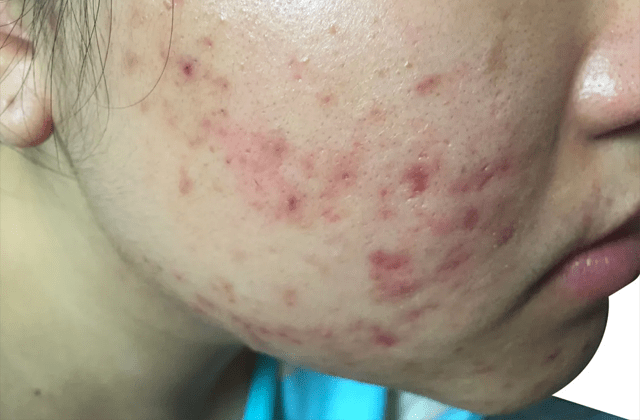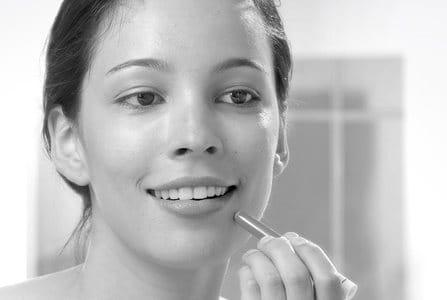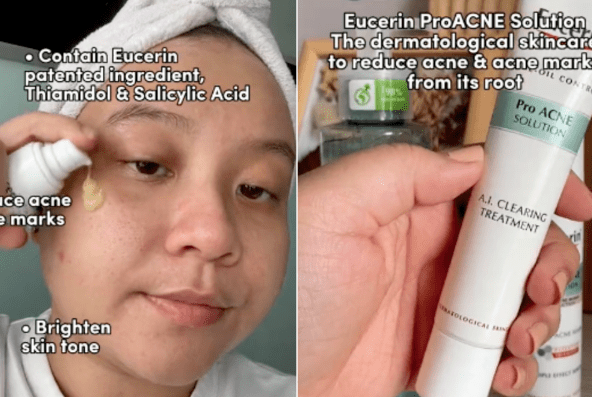What Causes Acne?

Most acne breakouts are influenced by:
- Stress and lack of sleep
- Use of unsuitable skincare or makeup
- Certain medications (e.g., corticosteroids)
- Genetic predisposition — if your parents had acne, you might be more likely to experience it too.
How Acne Develops
Acne is a common skin concern that begins deep within the pores. Here’s what happens:
- Hidden early stages: Pores get blocked, but you can’t see it yet.
- Excess oil (Sebum): Too much oil clogs the pores.
- Dead skin buildup: Excess skin cells block pores and form comedones (blackheads and whiteheads).
- Bacteria and acne: Once the pores are clogged, bacteria grow in clogged pores, leading to inflammation and acne.
If acne persists or becomes severe, it’s always best to consult a pharmacist or dermatologist for proper care and treatment options.
Oily Skin and Acne-Causing Bacteria
When sebum can’t flow out due to a blocked pore, it becomes trapped beneath the surface — creating the ideal environment for acne bacteria (P. acnes) to thrive.
These bacteria prefer low-oxygen conditions inside clogged pores, where they trigger acne. This leads to visible symptoms such as:
- Red papules (bumps)
- Pustules (bumps with white tips)
- Deep cystic acne (painful lumps under the skin)
Types of Acne
Acne can appear in different forms, depending on how the skin reacts. The most common types include:
- Blackheads: Small dark spots that appear when pores are clogged with oil and dead skin.
- Whiteheads: Small bumps formed when the same mixture is trapped beneath the skin’s surface.
- Active acne: Visible red pimple spots that may leave marks after healing.
- Acne marks: Dark spots that remain after breakouts, often caused by post-inflammatory pigmentation.
With the right skincare routine and gentle daily care, these concerns can be visibly reduced for clearer and healthier-looking skin.
How the Eucerin ProACNE Solution Treatment Helps
Achieve clearer, smoother skin with a simple 3-step routine designed for oily and acne-prone skin:
- Cleanse: ProACNE Solution Cleansing Gel-to-Foam (150ml) gently removes excess oil and impurities without drying the skin
- Treat: ProACNE Solution Triple Effect Serum (40ml) helps reduce acne marks, unclog pores, and prevent new blemishes.
- Protect: Sun Oil Control Dry Touch SPF shields against UV rays, controls shine, and prevents post-acne dark marks.
This lightweight, dermatologically-tested regimen works together to visibly refine skin texture, reduce imperfections, and leave skin feeling fresh and balanced every day.
Tips for Managing Oily and Acne-Prone Skin
To help keep your skin balanced and clear, follow these dermatologist-recommended tips:
- Cleanse gently with a mild cleanser formulated for oily or acne-prone skin. Avoid over-washing, which can strip the skin and increase oil production.
- Apply Eucerin ProACNE Solution Triple Effect Serum every morning and night. Consistency is key.
- Use non-comedogenic sunscreen daily to protect against UV rays and prevent post-acne marks.
- Avoid squeezing pimples — it can worsen inflammation and lead to long-term scarring.
- Choose lightweight, non-comedogenic makeup that won’t clog pores.
Clear Skin Takes Time — and the Right Care
Our brand values

We deliver a holistic dermo-cosmetic approach to protect your skin, keep it healthy and radiant.

For over 100 years, we have dedicated ourselves to researching and innovating in the field of skin science. We believe in creating active ingredients and soothing formulas with high tolerability that work to help you live your life better each day.






